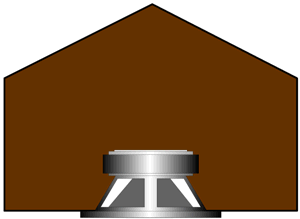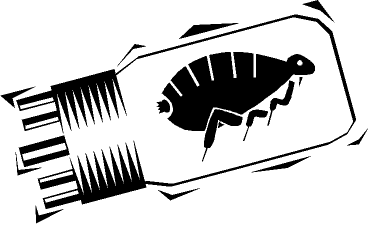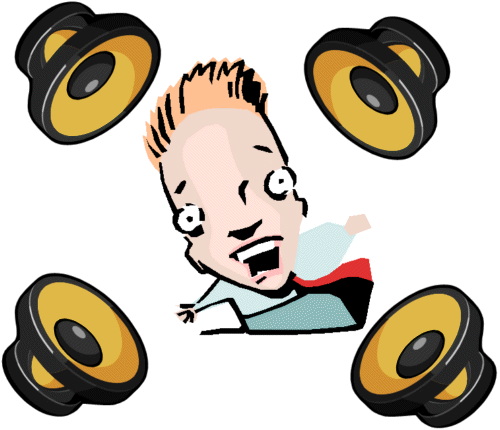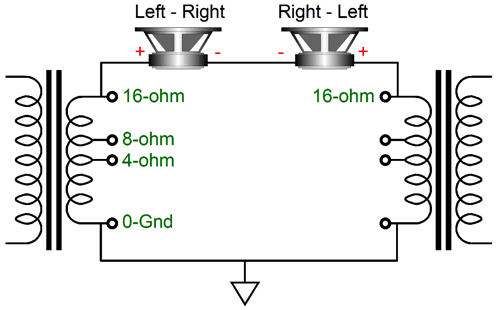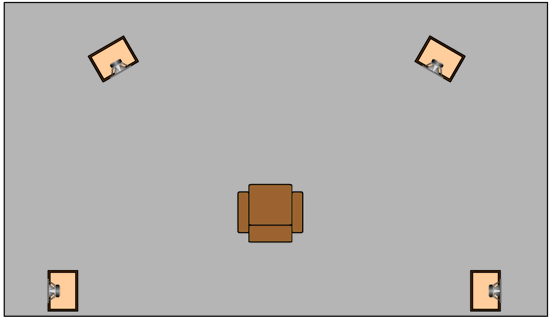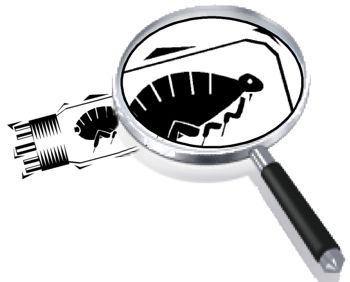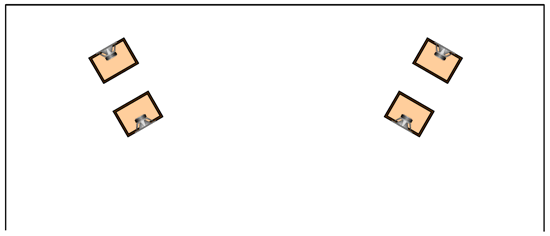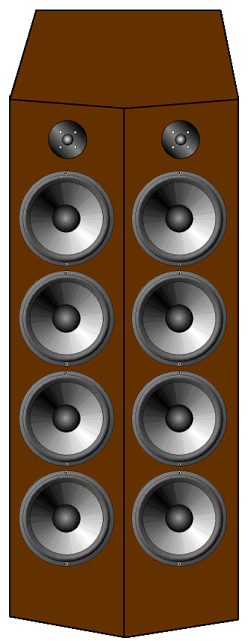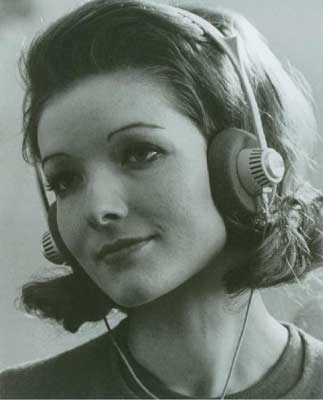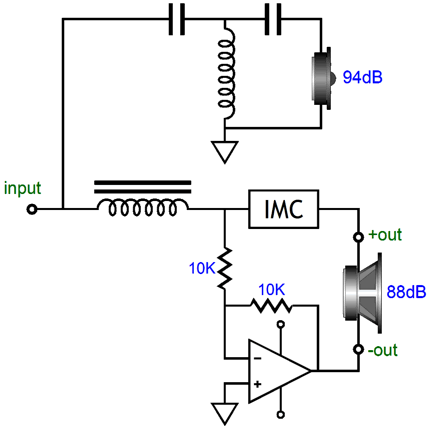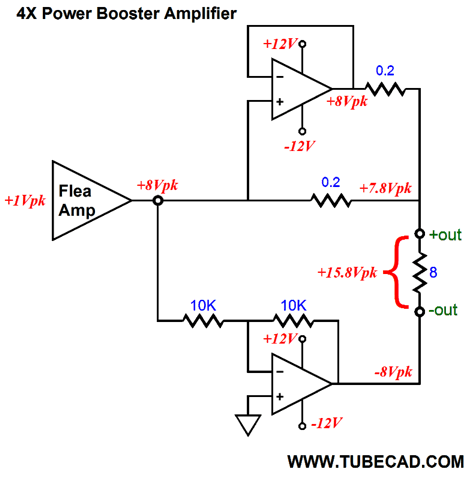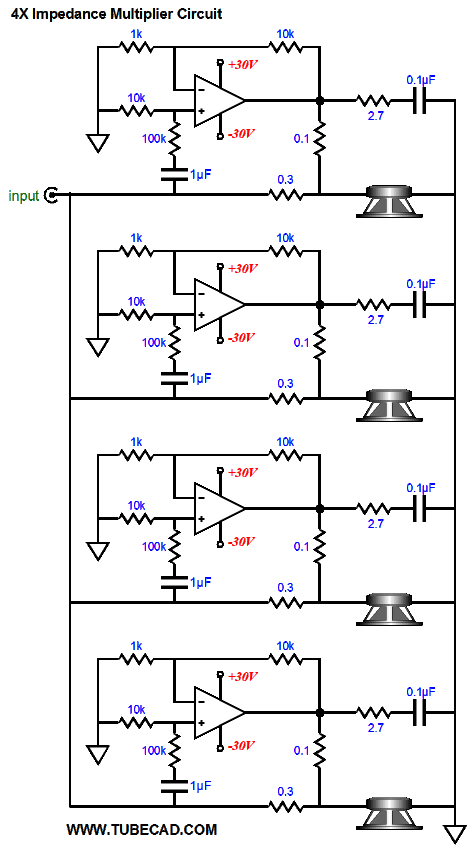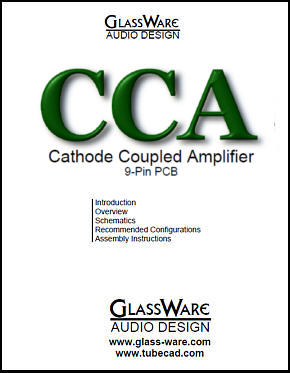| John Broskie's Guide to Tube Circuit Analysis & Design |
19 February 2014
Bose 901 Loudspeakers, Seriously? Amar Bose died last year, yet his famous 901 speaker persists—as does his company, the celebrity, and the controversy. Founded in 1964, Bose Corporation not only still exists, but thrives, with revenues of $2.28 billion in 2011. It is quite possible that the total combined revenue for all high-end-audio companies in the USA does not exceed this amount. The Bose 901 loudspeaker model, introduced in 1968, is still being sold; such a long sales life, with the exception of the Klipschorn, is very rare indeed. And no doubt that if a survey were made of the general population, asking what company made the Rolls Royce of audio equipment, Bose would top the list. Don't believe me? Well, perform a small experiment: announce tomorrow at work that you just bought a pair of Bose 901 loudspeakers to half of your coworkers and, later, tell the other half that you just bought a pair of Magico Ultimate loudspeakers; then, compare the oohs and ahs the first group emits to the blank stares of the second group. Of course, if you told your local group of audiophiles that you had just purchased a pair of Bose 901 loudspeakers, the oohs and ahs would be replaced with gasps and groans.
A Bit of History Most were enthralled by the resulting sound. Back in the early 1970s, I, however, like so many other snobby audiophiles (I was an audiophile before I knew that there was a word "audiophile"), just hated them, instinctively and passionately. (In contrast, I just loved, loved the Quad electrostatics.) But even then, I wondered wherein laid the blame: was the concept fundamentally wrong or was the execution flawed. I wondered how well the renowned speaker would have performed if it had been a two-way system, with some tweeters added to the mix, rather than an assemblage of nine small full-range drivers. Not that nine tweeters would be required, as two rear-facing and one heavily-padded front-firing would suffice. Moreover, I was convinced that Amar Bose was on to something, as adding some indirect speaker radiation did improve the sonic presentation substantially. By the way, some audiophiles do like the Bose 901. Don't belieive me? Read Jeff Dorgay's review at tonepublications.com. And Wayde Robson wrote an article titled, "Bose: Why Audiophiles Should Stop the Hate." Back in 1972, while I was in high school, I competed with a buddy in a two-man contest to hear who could build a better-sounding loudspeaker. I won. I knew that he highly esteemed the Bose 901 speakers; so, as something of a joke, I built speaker cabinets that looked like the 901s, although much smaller, and only held one forward-firing, full-range Trusonic 6-inch driver (which now seems to have attained cult status with some audiophiles).
My thinking was that the pentagonal cabinet had to be better than the typical rectangular box design, as non-parallel walls could only help in breaking up standing waves within the enclosure. The speakers sounded quite good, offering excellent imaging, but something was missing. I had used the 6-inch driver many times before, but I had found that it always sounded better with the addition of a tweeter that engaged above 8kHz and fired backwards. So, I added two tweeters to each speaker cabinet, each firing backwards. Now, the speaker truly sang. The only crossover component was 1.2µF capacitor for the two tweeters that were wired in series, as the full-range's own inductance functioned as its accidental crossover inductor and worked to flatten the speaker's impedance plot. (If I had had any brains, I would have boxed my speakers up and sent them to Framingham, Massachusetts, so Mr. Bose could hear them himself—who knows, it might just have changed the direction of his design efforts.) Other than the every-mother's-child-is-beautiful effect, why did I so much prefer the sound from my speakers to that of Bose 901 loudspeakers? As I see it, the flaw in the 901 approach is that too much of the sound that the eight rear drivers on the 901 emit hits the listener's ears too soon, blurring the front driver's output. In contrast, the two backward-firing tweeters on each of my speakers could only project their output at the back wall, as their high-frequency output could not diffract around the relatively large cabinet. Thus, by time their sound arrived at my ears, my brain treated the sound as ambiance, not primary signal. Never forget that your listening room is an audio component, albeit an expensive, inflexible, and ill-designed audio component. Many studies have shown that for a loudspeaker to be judged good, the indirect sound it generates must share the same frequency content as its direct output. This goes a long way to explain why dipole loudspeakers, such as most electrostatics and the Magneplanar designs, sound so good. As do many omnidirectional loudspeakers, such as the German Physiks Unlimited MKII that I mentioned in blog number 273 and which instantly won my ear's love. But since the listening room plays so large a role, anyone of these otherwise excellent speakers can sound off in the wrong room. No doubt, somewhere, at some time, there must have been a listening room that perfectly mated with the Bose 901 loudspeakers; I just never heard it. By the way, I knew many a Bose 901 owner who used his loudspeakers backwards, with the eight drivers pointing forward. I also knew a Bose 901 owner who used the equalizer that came with is 901s with other loudspeakers and he preferred sound from the non-Bose speakers, which could only remind me of those friends who owned multi-band equalizers, with the two outside sliders always at the top. I also knew another proud Bose owner, not 901s but the floor-standing rectangular-box Bose speakers, who placed one in his dining room and one in his living room and he loved the sound they produced. No, he wasn't an audiophile; he was a musician and music lover.
The 901 Deconstructed Now, if both amplifiers delivered the same signal to each of the drivers that a normal 901 would distribute, then there would be little point to this experiment. But if we add a ratio potentiometer to the mix, so we could adjust the signal level delivered to the rear speaker drivers, then we might get some interesting results. Here a remote control would come in handy, as we could vary the amount of reflected sound on the fly, setting the optimal amount for each recording. Ideally, each preferred setting could be stored to a database, so it could be recalled and put in place the next time we listened to that track or album. In addition, if we added the ability to apply a time delay to the signal the rear drivers received, then the added sonic control might prove dazzling. Perhaps not so much for every listener. I seem to be highly sensitive to picture aspect ratio distortions, which no one else in my family can even notice. My brain and eyes strongly prefer round circles over circles squished into ellipses, or perfect squares over truncated into rectangles, or tall leading ladies instead of women seemingly only four-feet tall. (In a related fantasy, I have longed to hear Klipschorn speakers driven in a tri-ammped setup, with tweeter and midrange amplifiers getting a time-delayed signals, each in amount required to let the woofer's slow travel through the folded horn emerge in sync with the midrange's and tweeter's output. In other words, a pulse signal would arrive at our ears as single pulse, not three separate pulses. With a digital-based music source, such as a computer-based server system, performing this experiment would be a breeze; not so for LP listeners. While in high school, I even owned a single Klipschorn, which came filled with scores of fat, live, black-widow spiders, the result of being stored in a garage for a decade. Even back then, I thought of using two tonearms and two phono cartridges, positioned to impose a time delay on the signal that the tweeter and midrange would receive.)
My most recent thoughts were that the 901 could be broken into two cabinets, with the first standing in front of the second and the first getting its power from a flea-powered tube amplifier that put out only 4W, while the second cabinet located at least three feet behind and powered by a big solid-state power amplifier. Since the closer speakers would win most of our ear's attention, these speakers would define the majority of the sonic presentation. (It would be similar to the old Quad current-dumping power amplifier idea, which held a small, class-A amplifier working in parallel with a big class-B power amplifier, but with speaker drivers.) The three-foot separation is important, as it corresponds to the ear's 3 millisecond time window of integration. If two related sounds occur within this time window, the ear will try to perceive them as being in sync; if outside this window, out of sync. (Actually, hearing is far more complicated, as the relative SPL and frequency content must be factored into the mix.) The two-cabinet loudspeaker system would play loud, even with the forward speaker only getting 4W, as the rear speaker would be putting out almost ten times the output, which could be achieved by either using more efficient drivers or more drivers or more amplifier power or any combination of the above.
Odd Results
With the exception of those once popular four-channel setups, with four musical instruments reproduced, each coming exclusively from its own speaker, the added speakers seldom impress at first. Long ago, I used to add two small speakers to my existing system, resting far behind me and pointed at the side walls. They were fed the out-of-phase signals present in a stereo recording, so mono recordings produced no signal for these flanking speakers to reproduce. If the two channels held differences, the speakers would reproduce them. For example, if only the right channel got any signal, the rear-right speaker would play it, while the rear-left played it as well, but out of phase. Since most low-frequency content in recordings is in phase, these rear speakers were save the burden of having to go low. Below is an output-transformer-based example, but the same setup works with solid-state amplifiers, as long as the amplifiers share a common power supply.
On the other hand, a single extra power amplifier can be used to power both speakers, if it is fed the left-right signal, which is easily derived by a simple OpAmp circuit.
After getting everything in place, I sat down, expecting to be thrilled. I wasn't. In fact, I could hardy hear the flanking speakers. Nonetheless, I persisted and listened away for another hour or two, knowing that subtle differences often take time to reveal themselves. (This makes me wonder what the hell those lonely, single people have in mind with speed-dating arrangements, wherein two candidates are given a few minutes to talk to each other before moving on to the next victim; perhaps, just as modern paragraphs, sentences, and attention spans have shriveled, conversational wherewithal has also withered, so maybe three minutes is all it takes to exhaust a modern conversation, even when the topic is that all-time favorite: yourself.) Well, after several hours of playing big classical pieces and small string quartets and intimate jazz combos and live rock festival recordings, I decided to turn off the rear, flanking loudspeakers. Tragedy. The sound-stage collapsed, falling into a small caricature of what had preceded it, shrinking from expansive and majestic to tiny and squalid. I felt much as the young lover does at the first prolonged absence of his beloved, who might not have dazzled him at first meeting, but who now fills his every thought and whose absence seems to have drained his existence of its vitality and purpose, as if his universe had shrunk to unbearably diminutive proportions. How was it possible to have gone from good two-speaker stereo to marginally better multi-speaker sound to deflated sound, not the original good two-speaker stereo that had so enjoyed just hours before? The second odd result of experimenting with multi-speaker systems is that it seems to play louder—or rather, it seems not to require the same ear-bleeding sound-pressure levels to convey the same sonic heft and significance as the conventional two-speaker system. Surely, you have been at a friend's house, while he is showing off his latest audio purchase and the room fills with dazzlingly Hi-Fi sounds. You turn to him to offer some admiring comments, but he cannot hear you, so you scream out your praise, which he can still barely hear above the din coming from his loudspeakers. In the concert hall, however, even with Stravinsky's Rite of Spring at full throttle, a whisper to your partner can readily be heard. What is going on here? For me, nothing so marks the essential failure of home music reproduction as this decisive difference: high-end audio demands high playback levels to be appreciated. Real, un-amplified music isn't so constrained. I was once lucky enough to be in the company of a gifted Brazilian singer, Claudia Villela. Our small group had been talking and she spontaneously broke into a cappella singing. Soon, my friend, Brad, accompanied her by softly drumming on the tabletop. We were in public and if you stood just twenty feet away, I doubt that you would have been aware of the musical performance, for it was a subdued and confidential recital. Yet, it did not suffer because of the smallness; indeed, it benefited. Hulking subwoofers, towering loudspeakers, and massive power amplifiers would have only gotten in the way of the musical message, much in the same fashion that full body armor would get in the way of a loving hug, a tender kiss. By the way, if you do not know about Claudia Villela, you should. She has a five-octave range; and I didn't really know the meaning of the phrase "consummate artist," until I heard her perform live. As Bela Fleck put it, "She is pure music!" Power Boosters
The unanswered question is: Do the front speakers still dominate the sonic presentation, sounding like a flea-powered amplifier on steroids? Or, will the louder rear speakers win the ear's attention? I cannot perform this experiment, as I do not own four identical speakers or a 256W power amplifier. (When I lived in California, both were readily available to me, alas.) One workaround to the 256W power amplifier requirement would be to use more rear speaker drivers, a la the Bose 901, say eight rear drivers, which if 8-ohm designs, would produce much higher SPL for a given signal level than the single front speaker.
Since all eight drivers would be arrayed in series-parallel, the resulting combined impedance would be 4 ohms and each driver would see half of the signal, resulting in -6dB decrease in SPL. But since the rear speakers would hold eight times the radiating surface area, their combined SPL would increase by +18dB, which when added to the -6dB loss equals a net gain of +12dB. Now, the power amplifier need only deliver twice the signal level as the flea-powered amplifier. By the way, twice the signal level, in this case 16Vpk, is not twice the power output; it's four times the power output, in this case 16W. Do not get all disappointed, convinced that 16W isn't a lot of power boosting, as this system would play just as loud as the previous system with four identical loudspeakers and the 256W power amplifiers. (With the original Bose 901 speaker, each full-range driver saw 1/3 of the signal, so its SPL fell by -9.54dB; but as the total radiating surface was nine times that of a single driver, the SPL grew by 18dB – 9.54dB, or about +8.5dB. Actually, since eight of the speaker drivers fire rearward, the calculations depend on the room and its reflectivity, as in an anechoic room, only the low frequencies produced by the rear eight drivers would be heard in front of the speaker, due to the low-frequency diffraction around the enclosure.) Now, if we only need match our 4W flea-powered amplifier with a 16W amplifier, we are no longer obligated to use a solid-state amplifier; in fact, we could use another tube amplifier, say a 16W, triode-based, push-pull power amplifier to accompany our tiny 4W, single-ended power amplifier—both of which would use the same output tube and the same power supply and chassis. What a lovely sight that would be: a mono-bloc amplifier chassis that held three output tubes (perhaps three 300B output tubes) and two output transformers. How would such as system sound, with two amplifiers and two speaker cabinets per channel, the rear speakers facing the back wall and holding eight drivers? Possibly quite good, but I am inclined to think that Mr. Bose got his optimal ratio wrong, that the rear firing speakers do not need to play that much louder than the front speakers. Of course, each listen room will have its preferred ratio, with small, highly reflective rooms requiring very little output from the rear speakers; large, well-damped, highly-absorptive rooms, much more output. One size, as so often is the case, does not fit all. In addition, each recording will have its own optimal ratio. Thus, a ratio control would make a helpful addition to the system. The more sonic control, the better—but then, I didn't have to tell you my preference and prejudice. Perhaps, now that Mr. Bose rests in peace, his company might rethink their most venerable speaker design and move it into new direction. Digital processing is cheap, as are class-D power amplifiers, so adding both to the existing 901 equalizer box would not cost that much more. If nothing else, I always thought the Bose 901 speakers (with their elegant stands) were lovely to behold. Imagine my pleasure, if I thought their sound matched their good looks. So, yes indeed Wayde Robson is right: it is time to stop the hate and start the loving, but Bose must first give us something to love and newly revised 901 would be a great start, particularly if they kept the price below $1,500 the pair.
Headphones and Loudspeakers Working Side by Side
The subwoofers added what headphone listening always lacks: visceral impact. My innards contorted with deep sounding of kettle drums; thunder accompanied lightning. At the same time, although my neighbors were not spared the deep rumblings, they could not locate the source, as the fourth-order, low-pass, 80Hz filter so limited the subwoofer's higher frequency output, that the normal sonic directional clues were absent. In other words, while this setup did produce fantastic sound, it totally undermined the headphone's usual chief advantage: not bothering others with our music. (I have been on subways and buses, sitting rows away from some clown wearing headphones that blared so loudly that I could easily hum along with the powerful buzzes leaking from his exhausted ear-buds. Imagine if he had brought a portable subwoofer with him. One of the few things that Jean Paul Sartre got right was that "hell is other people"—well, at least it often is; but then, so is heaven.) Now, what if we added two small full-range loudspeakers to the headphone experience? Say behind your head, behind your listening chair, end to end, so each fires into a wall, assuming your chair is situated in a corner. As long as your headphones are the open-back type, such as the Sennheiser HD650 and HD800 types, then the sound from the loudspeakers will reach your ears indirectly after bouncing off the walls and coming through the headphones. Such a setup would require a separate power amplifier for the loudspeaker, but since you would be sitting so close to the speakers, it need not be all that powerful. Once again, a headphone-speaker ratio control would be appreciated. Moreover, stereo may not be needed or even desirable, as the headphones already apply too much separation. Nor would extended high-frequency response be needed, as much could not get past the headphone foam. In other words, a single 6-inch woofer-midrange might suffice. I short, the result I would want to obtain is more listening pleasure at a lower volume level. I like being able to hear and it would be sadly ironic to lose my hearing while listening to music at too high an SPL. So, a better way to think about this arrangement is not power boosting, but performance or pleasure boosting. Let's face it, even a tube-based headphone amplifier can play plenty loud, so the prevalent dissatisfaction with headphone listening that so many audiophiles complain of does not stem from a lack of volume, but some missing attribute, such as visceral impact and a more natural sonic presentation, less of the-band-seems-to-be-playing-inside-my-head sensation. Ideally, good headphones are like good binoculars, they allow us to perceive what we had only dimly apprehended before. But like binoculars, the presentation is unnatural. Adding the loudspeakers might restore a more natural sonic perspective, without losing the magnifying qualities of the headphones. Simple, Bread-and-Butter Power Boosting I have covered power boosters before (blog numbers 262, 261, 153 and many others), but a quick recap is in order. By power booster I don't mean just a big power amplifier that follows your existing small power amplifier. Instead, I mean an electronic circuit that augments your existing small power amplifier, adding to its output, not replacing it. In other words, the power booster that I am interested in is not just another big power amplifier; it's an altogether different animal.
From the e-mail that resulted from my previous posts on this topic, I gleaned that what most critics feared was that the power booster would not just supplement, but pollute the smaller amplifier's output, resulting in a muddy mess, not a high-resolution enlargement. This is a valid concern. But if we limit the power booster's range of operation, we also limit its possible culpability in the resulting escapade. For example, what if we let the flea-powered amplifier entirely drive the tweeter, but let the power booster help drive the woofer. Such a setup is easy to imagine, as most tweeters are more efficient than most woofers; thus, the prevalent need to pad down the tweeter's output to match that of the less vocal woofer. If the tweeter is 6dB more efficient than the woofer, then the woofer would need to see twice the signal to match the tweeter's SPL (or the tweeter will need to see half of the signal to match the woofer).
The above circuit, which would reside within the speaker cabinet, doubles both the voltage and current that the external, small power amplifier can deliver into the woofer, thereby increasing the woofer's SPL by 6dB, bringing it inline with the more efficient tweeter. Yet, the small amplifier still thinks that it is driving an 8-ohm woofer.
On the other hand, if the tweeter, say a horn-loaded design is 12dB louder than the woofer, then the woofer would need to see four times the signal amplitude to match the tweeter's. Once again, four times the signal level is not four times the power; it is 16 times more power. So a 4W flea-powered amplifier would need to be paired up with power booster that could help it deliver 64W into the woofer. (The power booster would do this by adding 60W of output to the flea-power amplifier's 4W of output.) Assume that the horn-load mid-tweeter crossover at 1kHz and puts out 100dB with 2.828V (4Vpk) of signal. Also assume that the woofer puts out an SPL of 88dB with the same signal amplitude. This woofer will need 16 times the power to catch up with the tweeter. But if we use two woofers, we will gain +6dB in SPL, due to the doubling of emitting area. Thus, in this case, the woofers would only need to see twice the signal, four times the power for each woofer. And if we use four woofers and each sees all of the signal level, we gain +12dB in SPL. In other words, four 88dB woofers would produce 100dB, if each woofer was given 1W of power, allowing them to match the horn's greater efficiency. (I would love to hear four high-quality 6-inch woofers with a horn mid-tweeter, as I am sure that the small woofers will easily outperform any 12- or 15-inch in the mid-bass.)
This might prove the ideal situation, as the four 8-ohm woofers in parallel will result in an impedance of 2-ohms, which an impedance-multiplier circuit (IMC) can readily make appear as an 8-ohm load to the small power amplifier. In other words, we wouldn't need any signal gain, just impedance multiplying. Of course, since a solid-state power amplifier capable of driving 2-ohm loads is hard to find, we might expect that building an impedance-multiplier circuit might be hard to design and build, as it must make 2 ohms appear as 8 ohms. But we can build our impedance-multiplier circuit out of more than one power amplifier. For example, we can give each of the four woofers its own gain-clone chip amplifier, such as the famous LM3886. As far as each LM3886 is concerned, the load is 10.7-ohms and very little current and voltage delivery is required of it. In fact, each LM3886 can be viewed as being a solid-state flea-powered amplifier, as it only needs to put out 8Vpk and 750mA peak into its woofer to match the tweeter's output. (Do not forget that the flea-powered amplifier still delivers its output into the four woofers, and that this power must be added to what the impedance-multiplier circuit contributes.)
Note that the input is not the line-level, 1Vpk signal that a typical power amplifier hopes to see, but the output from the flea-powered amplifier. And not shown is the passive crossover network that would fall in between the small amplifier and the IMC. Also note that each 8-ohm woofer is being impedance multiplied by a factor of four by its LM3886-based IMC. Thus, the four 32-ohm loads presented by the four parallel IMCs combine to present an 8-ohm load to the small amplifier and passive crossover network. Of course, if the horn-loaded tweeter can handle more power, say 36W, then each LM3886 should be able to deliver almost that much power (24Vpk and 2.75A of peak current, or 33W) into its 8-ohm woofer. Such a high-efficiency loudspeaker will need to be plugged into the wall and will still require a passive crossover, just as if the impedance-multiplier circuit were not there. And unlike the electrostatic loudspeaker that also plugs into the wall socket, this passive-active speaker will dissipate some heat and require a heatsink. Personally, I think a large heatsink protruding from the speaker enclosure's back would look cool, although hot to the touch. But I bet that most wives would disagree, finding the look excessively macho, too reminiscent of the back of bulls or codpieces worn not so long ago by most men; today, only by heavy-metal rock performers (of course there was that Rolling Stone magazine cover, which displayed a manly Al Gore; such a pity that he forgot to wear his codpiece on the outside of his pants in the manner of henry VIII). Although we are told each decade that the codpiece will make a comeback soon, I am inclined to disagree—surely, the name "codpiece" is just too outlandish. Wait a minute. That just might make a great name for a new high-end audio company: Codpiece Audio. Just imagine a likely logo—but do so only before you have eaten lunch, not after.
Speaking of Power Boosters
Next Time
Since I am still getting e-mail asking how to buy these GlassWare software programs:
For those of you who still have old computers running Windows XP (32-bit) or any other Windows 32-bit OS, I have setup the download availability of my old old standards: Tube CAD, SE Amp CAD, and Audio Gadgets. The downloads are at the GlassWare-Yahoo store and the price is only $9.95 for each program. http://glass-ware.stores.yahoo.net/adsoffromgla.html So many have asked that I had to do it. WARNING: THESE THREE PROGRAMS WILL NOT RUN UNDER VISTA 64-Bit or WINDOWS 7 & 8 or any other 64-bit OS. One day, I do plan on remaking all of these programs into 64-bit versions, but it will be a huge ordeal, as programming requires vast chunks of noise-free time, something very rare with children running about. Ideally, I would love to come out with versions that run on iPads and Android-OS tablets.
//JRB |
I know that some readers wish to avoid Patreon, so here is a PayPal button instead. Thanks. John Broskie Kit User Guide PDFs
And
High-quality, double-sided, extra thick, 2-oz traces, plated-through holes, dual sets of resistor pads and pads for two coupling capacitors. Stereo and mono, octal and 9-pin printed circuit boards available.
Designed by John Broskie & Made in USA Aikido PCBs for as little as $24 http://glass-ware.stores.yahoo.net/
The Tube CAD Journal's first companion program, TCJ Filter Design lets you design a filter or crossover (passive, OpAmp or tube) without having to check out thick textbooks from the library and without having to breakout the scientific calculator. This program's goal is to provide a quick and easy display not only of the frequency response, but also of the resistor and capacitor values for a passive and active filters and crossovers. TCJ Filter Design is easy to use, but not lightweight, holding over 60 different filter topologies and up to four filter alignments: While the program's main concern is active filters, solid-state and tube, it also does passive filters. In fact, it can be used to calculate passive crossovers for use with speakers by entering 8 ohms as the terminating resistance. Click on the image below to see the full screen capture. Tube crossovers are a major part of this program; both buffered and un-buffered tube based filters along with mono-polar and bipolar power supply topologies are covered. Available on a CD-ROM and a downloadable version (4 Megabytes). |
||
| www.tubecad.com Copyright © 1999-2014 GlassWare All Rights Reserved |


